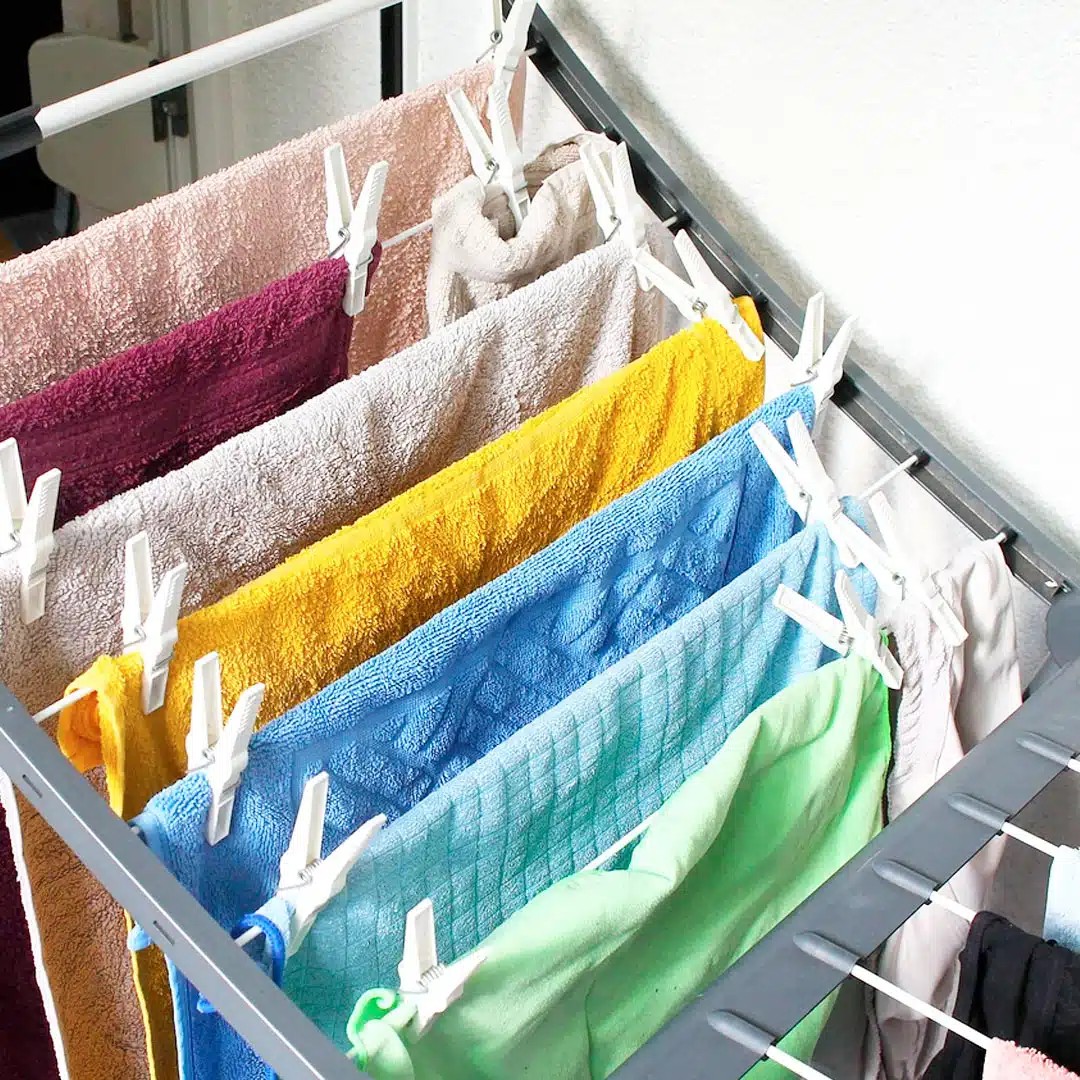ADVERTISEMENT
Next Page Or Open button (>) and don’t forget to SHARE with your Facebook friends
In addition, the fabric softeners, detergents, or other chemicals used in your laundry can release odors into the air, which can linger and contribute to poor indoor air quality. Drying clothes indoors in poorly ventilated spaces can make these issues even worse.
3. Damage to Your Home and Furniture
Excess moisture from indoor drying can also cause damage to your home over time. The increased humidity can lead to the deterioration of wooden furniture, doors, and windows. Wood absorbs moisture from the air, which can cause warping, swelling, or cracking. Additionally, wallpaper, paint, and drywall can be compromised by the added moisture.
In some cases, prolonged exposure to excessive humidity can cause structural damage to your home, particularly if the problem goes unnoticed. The cost of repairing mold damage or replacing damaged materials can quickly add up, making it a much more expensive option than simply drying your clothes outside or using alternative methods.
4. Longer Drying Times and Increased Energy Use
When you dry laundry indoors, it often takes longer for clothes to dry compared to outdoor drying or using a tumble dryer. The indoor environment doesn’t have the same airflow as the outdoors, meaning the moisture in your clothes doesn’t evaporate as quickly. This can result in damp clothes hanging around your home for longer periods, contributing to the aforementioned issues of humidity and mold growth.
If you’re using a tumble dryer indoors, you may find that it’s not as effective without proper ventilation, and your energy bills could increase. Running the dryer indoors in a space without proper ventilation can also lead to overheating and reduced efficiency.
5. Unpleasant Odors and Bacteria Growth
Damp clothes that take too long to dry indoors can develop an unpleasant musty odor, which can quickly spread throughout your home. The smell is often caused by the bacteria and fungi that thrive in wet, warm environments. These microorganisms can multiply on your clothing, causing the odor to linger even after the clothes are dry.
If you have items like towels, sheets, or workout clothes, which tend to retain more moisture, the smell can be particularly strong. When drying indoors, there’s also a higher risk that your clothes may not dry completely, leading to the growth of bacteria or mold on the fabrics themselves.
6. Health Risks for Vulnerable Individuals
The combination of excess moisture, poor air quality, and potential mold growth makes drying laundry indoors a health risk, particularly for sensitive individuals. People with asthma, allergies, or other respiratory conditions can be particularly affected by the increased humidity and mold growth that often result from indoor drying. Even healthy individuals may experience irritation in the eyes, nose, or throat, especially in spaces where ventilation is poor.
Infants, elderly people, and those with weakened immune systems are particularly vulnerable to the health risks associated with mold and mildew exposure. To reduce these risks, it’s best to dry laundry in a well-ventilated area or consider using alternatives such as outdoor drying or a dehumidifier.
Safer Alternatives to Drying Laundry Indoors:
While it may not always be possible to dry your clothes outdoors, there are several alternatives that can help you avoid the negative effects of drying laundry indoors:
- Use a Clothes Dryer with Proper Ventilation: If you have access to a clothes dryer, ensure it is properly vented to the outside to prevent excess moisture from building up inside your home. A well-maintained dryer can effectively dry clothes without contributing to indoor humidity.
- Use a Dehumidifier: If you must dry clothes indoors, using a dehumidifier can help regulate the humidity levels in the room. This device helps remove excess moisture from the air, reducing the risk of mold growth and improving indoor air quality.
- Use a Drying Rack in a Well-Ventilated Area: If you prefer to air-dry your clothes, use a drying rack in a room with good ventilation. Open windows or use a fan to ensure proper airflow, which can help reduce drying times and prevent excess moisture buildup.
- Invest in a Heated Airer: A heated clothes airer is an excellent alternative to drying laundry indoors, as it uses a gentle heat source to speed up the drying process. These devices can help prevent excess humidity and reduce the risk of mold growth.
- Take Advantage of the Outdoors: If the weather permits, hang your laundry outdoors on a clothesline. The fresh air and sunlight will not only help dry your clothes quickly but can also naturally kill bacteria and freshen fabrics.
Conclusion:
While drying laundry indoors may be a convenient option in certain situations, it comes with a range of risks and drawbacks that can negatively affect your health, home, and overall well-being. Excess moisture, mold growth, and poor indoor air quality are just a few of the reasons why it’s important to find alternative ways to dry your clothes. Whenever possible, opt for outdoor drying, use a clothes dryer with proper ventilation, or invest in devices that help regulate indoor humidity. By taking these precautions, you can keep your home safe, fresh, and comfortable while ensuring your clothes are properly dried.
